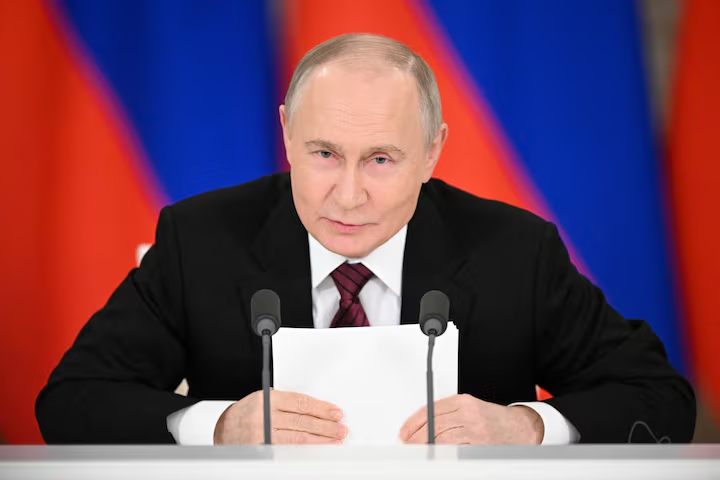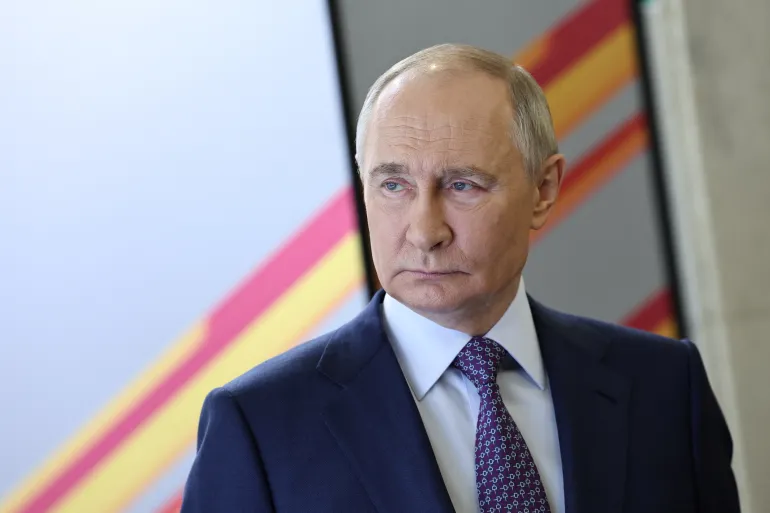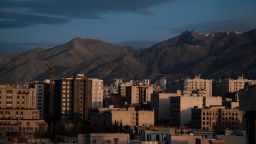Russian President Vladimir Putin visited the western Kursk region on Wednesday, May 21, 2025, marking his first trip to the area since Russian troops expelled Ukrainian forces in a contested border offensive. The visit was intended to signal control, reinforce national pride, and showcase Russia’s security posture in the ongoing war.
Putin toured military installations, met with local officials, and inspected defensive fortifications erected along the border. The Kursk region, which lies adjacent to Ukraine’s Sumy and Kharkiv provinces, has been a focal point of escalating cross-border clashes over the past two years.
“We are ensuring the security of our borders with strength and stability,” Putin told officers during the visit. “This region, like all of Russia, will remain under firm protection.”
The visit came just days after the Kremlin declared the complete expulsion of Ukrainian units from several villages along the Kursk frontier. Ukrainian officials have not confirmed the extent of the Russian advances but acknowledged that troops had repositioned in certain sectors to reinforce urban defenses near Sumy and Kharkiv.
Putin’s appearance in Kursk is part of a broader campaign to project domestic strength and consolidate military morale, as Russia continues its multi-front operations in Ukraine, including the ongoing assaults in eastern Donbas and near the southern Dnipro region.
Military Symbolism and Domestic Messaging
Kremlin spokesperson Dmitry Peskov described the visit as “routine,” but Russian state media heavily publicized the trip, broadcasting images of Putin greeting troops, laying flowers at a local war memorial, and holding meetings inside a heavily guarded operations bunker.
The message to domestic audiences was clear: Russia is winning, defending its people, and strengthening border regions that have come under frequent shelling and drone attacks.
Putin praised the resilience of residents living under near-daily artillery strikes and pledged increased investment in civil defense infrastructure, including bunkers, medical facilities, and emergency response units.
Continued Escalation at the Border
The Kursk and Belgorod regions have both seen intensified conflict in 2025, including Ukrainian drone strikes, sabotage operations, and special forces incursions that have embarrassed Moscow. Russia’s armed forces have responded with scorched-earth tactics and heavy artillery, often prompting civilian evacuations on both sides of the border.
Military analysts say the visit to Kursk signals Putin’s intent to entrench Russian control over contested zones and use border territories as launchpads for deeper operations into Ukrainian-held regions.
“This is more than a symbolic trip. It’s an assertion that Russia considers these frontiers strategically vital,” said Col. (Ret.) Vasily Makarov, a Russian military analyst.
International Reaction
Ukraine’s government has dismissed the visit as propaganda, with presidential adviser Mykhailo Podolyak accusing Putin of trying to “stage-manage a victory narrative” while ignoring the broader failures of the Russian military campaign.
Western governments, including the UK and Germany, reiterated that Russia’s occupation of any Ukrainian territory is illegal under international law, and warned that further escalation at the border could derail already fragile peace talks.
The trip also coincides with ongoing diplomatic efforts to organize a high-level summit involving the U.S., EU, Ukraine, and Russia, though optimism remains low amid intensified fighting and hardened positions.
Strategic Implications
While not a frontline battlefield like Donetsk or Zaporizhzhia, the Kursk region has become a symbol of national resistance and a buffer zone that Russia is determined to fortify.
Putin’s visit — his first since Russia claimed “complete security control” over the region — is likely to serve as a morale boost for troops and a warning to Ukraine and its allies that Moscow is in no mood to retreat.
With no signs of ceasefire and diplomatic breakthroughs still elusive, the trip underscores a key reality of the conflict: Russia is digging in, not backing down — and it wants the world to know it.
Source; Reuters



